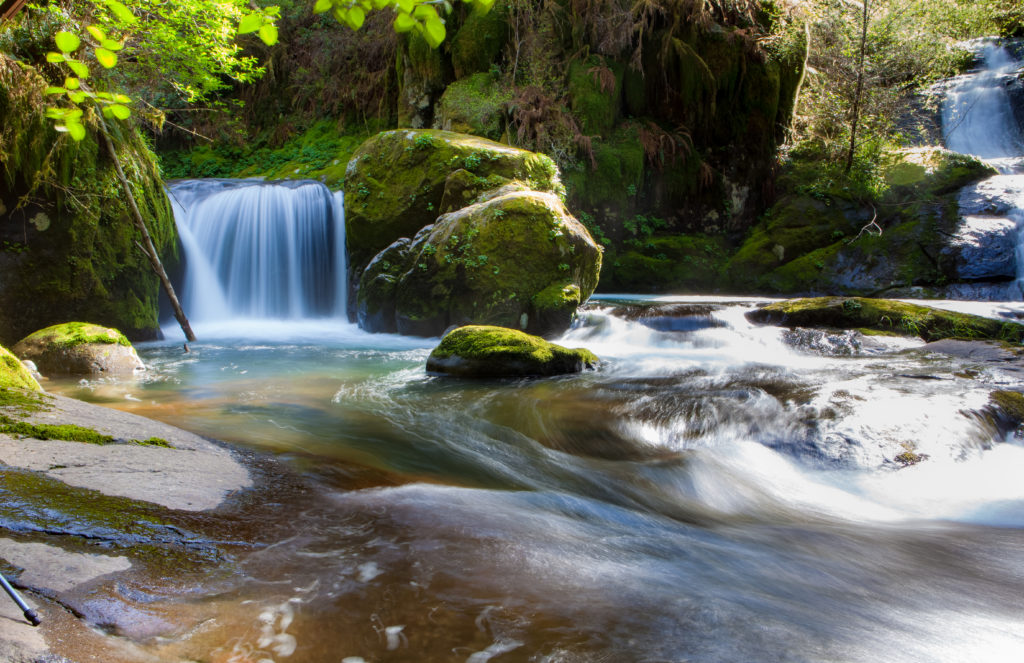How To Photograph Waterfalls And Rivers Creatively
#photographyeveryday #photographyislife #photographylover
By JasenkaG
Waterfalls, rivers, and streams can be wonderful subjects for landscape photographers. Photos of moving water are utterly magical if done properly and luckily you won’t need a whole load of expensive equipment. However, you might need some practice until you get it right, because moving water photography requires advanced technical knowledge.
No matter if you plan to shoot gorgeous tall waterfalls or small mountain streams, the following tips and tricks will help you snap some amazing pictures!
The Right Equipment
As previously mentioned, the equipment you’ll need for shooting moving water is fairly simple:- Camera
- Wide-angle zoom lens
- Polarizing filter
- Neutral density filter (optional)
- Tripod
 Photo by Robert Lukeman
Photo by Robert LukemanDon’t Stick To Sunny Weather
Even though shooting moving water in pleasant weather seems like a nice and safe option, the results tend to be mediocre at best. If you want to get some truly memorable photos of landscapes and rivers, try to get out of your comfort zone and shoot in cloudy, windy, rainy or even stormy weather.Rainy or overcast days will give you a softer and more appealing quality of light, while stormy weather with turbulent water and unusual clouds can make your photographs really splendid The same goes for shooting rivers in wintertime – it can be tricky, but capturing an enchanted winter wonderland is surely worth efforts.
 Photo by Raphael Koh
Photo by Raphael KohChoose The Right Timing
You should photograph waterfalls in even light and avoid harsh and contrasty light which can easily lead to overexposed or underexposed images. It’s also important to mention that shooting during blue or golden hour doesn’t always work when it comes to waterfalls and rivers because they are often in deep canyons or dark forests.For instance, if a waterfall or cascade is in a canyon or surrounded by mountains, sunrise or sunset won’t work for you as the sun may be completely blocked. In that case, you can still get creative images, but you will have to bring a flash too.
 Photo by Daniel Wallace
Photo by Daniel WallaceAlter Between Slower And Faster Shutter Speeds
When you think about waterfall photography, the first thing that pops in your mind is probably those silky water shots that capture the motion blur of moving water. While such shots look magical (without doubt!), there are also times when it’s great to capture a frozen moment of action.If you want to capture a motion blur, you should choose a slower than normal shutter speed to blur the water – something like 1/15 or 1/8th of a second is a good starting point. If you want more blur, shutter speeds in the range of 1 to 5 seconds should work. On the other hand, to capture a frozen moment, you will need something like t 1/100th of a second. In that case, you’ll be able to see individual splashes and water drops.
If you want to create something truly unique, you can take two exposures with different shutter speeds and then blend them in Photoshop to create an interesting mixture of frozen and blurred motion!
 Photo by Jon Flobrant
Photo by Jon Flobrant
Quick Tips – here are 3 tips for long exposure to get those ethereal soft photographs of moving water:
- Use the lowest ISO possible to reduce noise in your photos
- Choose an aperture between f8 and f11 for sharper images.
- Experiment with different shutter speeds. Try speeds from a few seconds to a few minutes to get the right effect.
 Photo by Carl Larson
Photo by Carl LarsonExplore Dark Canyons For Mystical Shots
If you have a penchant for adventure, you should definitely find and explore dark canyons with waterfalls – such locations usually yield the most beautiful scenes. You need to be armed with a sturdy tripod if you choose to shoot at such locations because it may be hard or impossible to catch the direct sunlight even at midday.You should also pay attention to interesting rock formations that surround waterfalls in dark canyons and use them to strengthen the composition of your photos.
 Photo by Levi Morsy
Photo by Levi MorsyUse Polarizing And Neutral Density Filters
Even though these two filters aren’t really mandatory, they can make a huge difference when you need to deal with wet rocks and reflections caused by water.If you decide to purchase these filters for your waterfall photography (and landscape photography in general), they will allow you to use longer shutter speeds, reduce reflections and make colors in your images more vibrant.
 Photo by Sergey Pesterev
Photo by Sergey PesterevAvoid Shooting The Sky
We tend to think (almost automatically) that all landscape images must have skies. However, by omitting the sky completely in your river or waterfall photographs you’ll be able to create a more powerful composition that dedicates the entire frame to what matters most.Omitting the sky has one more benefit – it will help you get the exposure right because overblown skies are usually the most problematic part of moving water photographs.
 Photo by Milada Vigerova
Photo by Milada VigerovaThink Abstract
You don’t have to fit the entire scene into your frame when you’re shooting rivers and waterfalls. In fact, it can be interesting to get closer and shoot only a small portion of a waterfall – this will remove the sense of scale and direction and make your image abstract in an unexpected way.If you decide to take the abstract approach, you’ll be able to focus solely on motion, colors and various shapes that appear in your photograph. In this way you can create an abstract scene powerful and surprising enough to hypnotize the viewer.
 Photo by Samuel Scrimshaw
Photo by Samuel ScrimshawExperiment with HDR
If you’re into HDR, you should know that it can work wonders for waterfall photography. HDR is an effective way to bring out details in the shadows of the rocks or to creatively change the appearance of the water as it cascades.You don’t have to make your image obviously HDR – even some slight alterations can improve the tonal range of your image and make details truly pop. You can combine multiple exposures in either Photoshop or HDR-specialized software such as Photomatix.
 Photo by Jeffrey Wegrzyn
Photo by Jeffrey Wegrzyn https://resources.digital-photography-school.com/ref/937/
https://resources.digital-photography-school.com/ref/937/
No comments:
Post a Comment
Note: Only a member of this blog may post a comment.